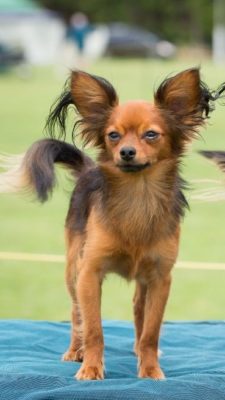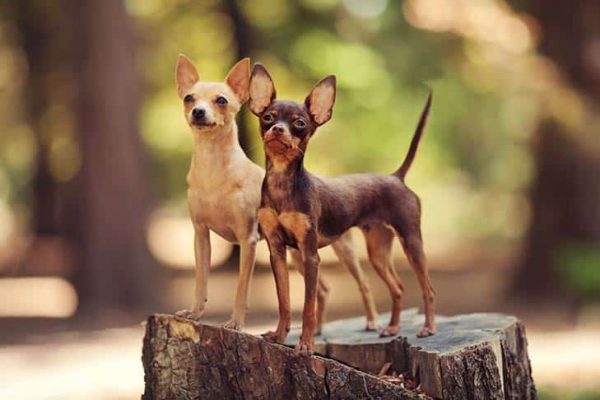Russkiy Toy
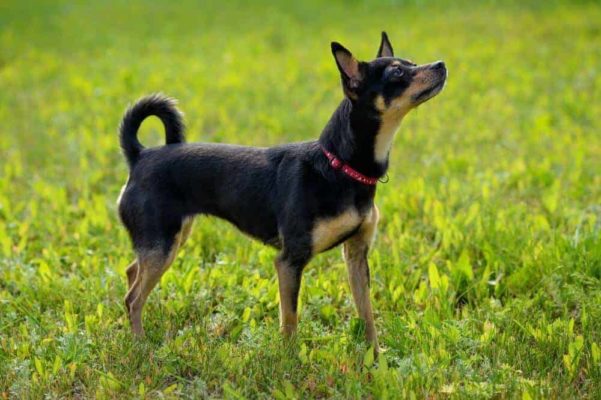
The temperament of Russkiy Toy can give a head start to any other dog above the height. On the street, this dog will proudly stride in front of the owner, all showing that he will not give offense! During a walk with the baby, he’ll always run-up to the stroller and check on how the baby feels and if he’s okay. If unfriendly strangers want to break into the house or apartment, he’ll buzz so that they’ll never guess that the tiny and fragile baby is hiding behind the door.
Table of Contents
Breed Information
| Another Name | Russian Toy, Russian Terrier, Russian Toy Terrier, Moscow Toy Terrier, Moscovian Miniature Terrier |
| Origin | Russia |
| Height | Males 24-28 cm Females 20-25 cm |
| Weight | 2-3 kg |
| Fur | Short, long |
| Color | Black and papal, brown and papal, blue and papal, mauve and papal, red and black, red and blue, red, pale, red and brown, red and mauve, cream |
| Lifespan | 10-12 years |
| FCI Classification | Companion and Toy Dogs |
| Group | Small breed or decorative dogs, dogs for apartments |
| Price | From $400 |
Breed Photos
Origin History
Russkiy Toy is a dog for the soul! The main purpose of the Russian Toy is a companion dog. It is one of the smallest breeds, but that does not prevent it from being a good friend for adults, a cute toy for children, and a worthy walking buddy. English Toy Terriers are considered to be the ancestors of the Russkiy Toy. The Russian elite of Peter the Great epoch took the English nobility’s example and took these little pets with them everywhere. With the advent of Soviet power, ornamental dogs were considered a bourgeois surplus and were safely forgotten for more than half a century. Only in the second half of the twentieth century was it decided to breed a second chance. The Soviet specimen differs from the British Toy Terrier in size, body proportion, and skull shape. The Russian version is almost one and a half times smaller than the British one.
Appearance
The miniature breed with its big triangular ears and intelligent eyes has won millions of hearts. These baby dogs weigh as little as three kilograms. The maximum height at the withers can reach 28 cm. But today, there are also mini versions of Russian Toys, which are a couple of centimeters lower than the breed standard. The dry musculature allows the representatives of this breed to look very graceful.
Russian Toys can be short-haired or long-haired. There are no special differences between them, except for the difference in care. In long-haired toys, the hair is concentrated on the ears, legs, and tail. Its color is black, brown, blue with undertones, as well as red or pale.
Character
The temperament of Russkiy Toy can give a head start to any other dog above the height. On the street, this dog will proudly stride in front of the owner, all showing that he will not give offense! During a walk with the baby, he’ll always run-up to the stroller and check on how the baby feels and if he’s okay. If unfriendly strangers want to break into the house or apartment, he’ll buzz so that they’ll never guess that the tiny and fragile baby is hiding behind the door.
But do not think that the representatives of this breed are always so restless and restless. Russkiy Toy is very attuned to the owner, responsively adjusts to his mood, and perfectly understands that this is not allowed. Small but great – here is a characteristic expression for the Russian Toy. By buying such a dog, you can be sure that you’ve found a devoted friend for many years.
Care
Russkiy Toy is ideal for keeping in a city apartment. Adult representatives of the Russian Toy breed are ready to walk for more than two hours, but puppies need only half an hour in the fresh air. It is advisable not to walk the pet in crowded places; he can trample or take advantage of his trustworthiness and take it away with you. Owners should teach the Toy to be careful at home; the bones’ fragility contributes to frequent dislocations and fractures. Care for the Russian Toya’s long-haired version focuses mainly on the constant combing out of the pet’s long hairs. If this is not done, the dog loses its healthy appearance and turns into a shaggy little behemoth. It is worth remembering; the dog does not like the cold weather, always freezes if the temperature drops below zero. Then you should dress your dog in a warm coverall or terry suit for walks.
Training
The Russkiy Toy should be trained from the first months of life. It is necessary to wean him from barking for no reason and chewing his shoes in the first place. Proper training will turn this decorative dog into an obedient and polite pet that will not be ashamed to walk around the yard. Russian Toy can’t be called a very diligent student; he won’t grasp all the commands on the fly. Stubborn sometimes categorically refuse to follow discipline during training. In this case, do not snap and yell at the pet; otherwise, he will withdraw into himself, and any successful training is out of the question. Encourage with tasty treats, praise, and cuddles – for the Russkiy Toy, this is the best motivation in the world!
Common Diseases
Mechanical damage to the fragile skeleton and thin limbs is the main headache for all Russian Toy owners. But it is also worth noting that in most cases, illnesses are due to improper feeding. Vomiting, diarrhea, problems with teeth, eyes, and the same musculoskeletal system. Do not self-medicate; it is better to go straight to the veterinarian. Only a specialist can determine the disease and prescribe the correct treatment that will not harm the pet.
Nutrition
When formulating the diet, it should be borne in mind that Russkiy Toys are prone to rapid weight gain. The adult Russian terrier of this miniature breed is fed twice a day, with strict adherence to a set schedule. The Russkiy Toy likes to beg for tidbits between main feedings, so it is easy to get fat. One-third or even half of the daily ration should consist of protein dishes – lean meat or fish. Dairy products will also be helpful, as well as vegetables, cereals, and dried bread. The recommended temperature of the dish is room temperature or slightly warmer. After the meal, remember to let the dog rest, and only after an hour or an hour and a half are it possible to take it out for a walk.
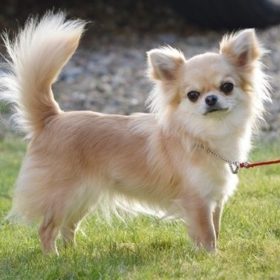 Chihuahua
Chihuahua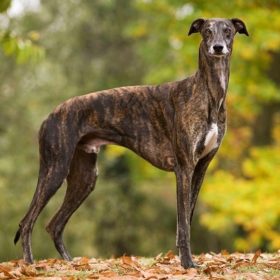 Magyar Agár
Magyar Agár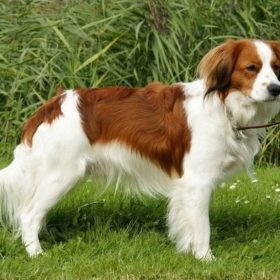 Kooikerhondje
Kooikerhondje Pražský Krysařík
Pražský Krysařík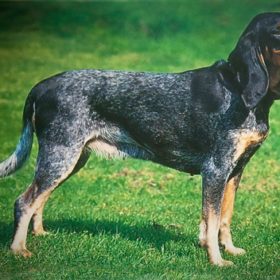 Small Lucerne Hound
Small Lucerne Hound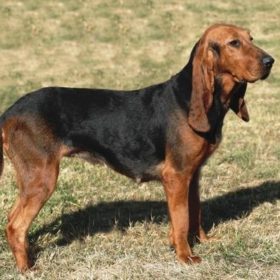 Bruno Jura Hound
Bruno Jura Hound